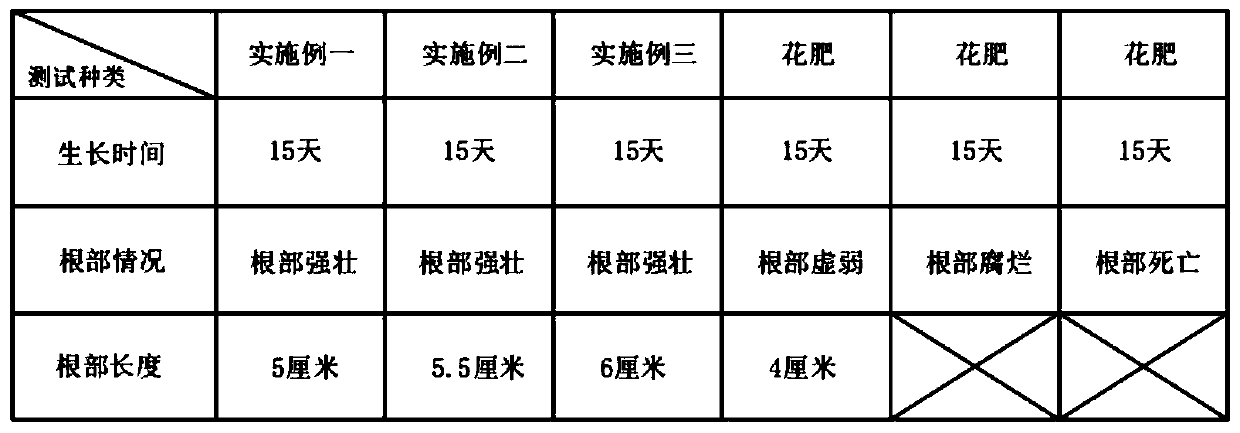Ceramsite suitable for planting of succulent plants
A succulent plant and ceramsite technology, applied in the field of ceramsite, can solve the problems of bacteria breeding, succulent plant weakness, and easy to produce peculiar smell, and achieve the effects of preventing root rot, excellent air permeability, and bright colors
- Summary
- Abstract
- Description
- Claims
- Application Information
AI Technical Summary
Problems solved by technology
Method used
Image
Examples
Embodiment 1
[0030] The present invention also proposes a ceramsite suitable for planting succulent plants, comprising the following components by weight: 78% of kaolin, 6% of medical stone, 6% of volcanic stone, 3% of cellulose and 7% of water;
[0031] S1. Granulation: Put 78% of kaolin, 6% of medical stone and 6% of volcanic stone into the granulator, and slowly form an oval shape by rotating clockwise. When the kaolin, medical stone and volcanic stone are fully mixed, add 3% cellulose and 7% water make it slowly into spherical particles;
[0032] S2, polishing: put the spherical particles obtained in S1 into a small granulator for polishing;
[0033] S3, drying: Put the spherical particles obtained after polishing in S2 into a drying room at 150 degrees Celsius for drying. The drying time in summer is 30 minutes, and the drying time in winter is 60 minutes. moisture;
[0034] S4. Screening: put the dried spherical particles in S3 into the vibrating screen for screening, and obtain sp...
Embodiment 2
[0037] The present invention also proposes a ceramsite suitable for planting succulent plants, comprising the following components by weight: 80% of kaolin, 5% of medical stone, 5% of volcanic stone, 3% of cellulose and 7% of water;
[0038] S1. Granulation: Put 80% of kaolin, 5% of medical stone and 5% of volcanic stone into the granulator, and slowly form an oval shape by rotating clockwise. When the kaolin, medical stone and volcanic stone are fully mixed, add 3% cellulose and 7% water make it slowly into spherical particles;
[0039] S2, polishing: put the spherical particles obtained in S1 into a small granulator for polishing;
[0040] S3, drying: Put the spherical particles obtained after polishing in S2 into a drying room at 150 degrees Celsius for drying. The drying time in summer is 30 minutes, and the drying time in winter is 60 minutes. moisture;
[0041] S4. Screening: put the dried spherical particles in S3 into the vibrating screen for screening, and obtain sp...
Embodiment 3
[0044] The present invention also proposes a ceramsite suitable for planting succulent plants, comprising the following components by weight: 82% of kaolin, 4% of medical stone, 4% of volcanic stone, 3% of cellulose and 7% of water;
[0045] S1. Granulation: Put 82% of kaolin, 4% of medical stone and 4% of volcanic stone into the granulator, and slowly form an oval shape by rotating clockwise. When the kaolin, medical stone and volcanic stone are fully mixed, add 3% cellulose and 7% water make it slowly into spherical particles;
[0046] S2, polishing: put the spherical particles obtained in S1 into a small granulator for polishing;
[0047] S3, drying: Put the spherical particles obtained after polishing in S2 into a drying room at 150 degrees Celsius for drying. The drying time in summer is 30 minutes, and the drying time in winter is 60 minutes. moisture;
[0048] S4. Screening: put the dried spherical particles in S3 into the vibrating screen for screening, and obtain sp...
PUM
| Property | Measurement | Unit |
|---|---|---|
| Size | aaaaa | aaaaa |
Abstract
Description
Claims
Application Information
 Login to View More
Login to View More - R&D
- Intellectual Property
- Life Sciences
- Materials
- Tech Scout
- Unparalleled Data Quality
- Higher Quality Content
- 60% Fewer Hallucinations
Browse by: Latest US Patents, China's latest patents, Technical Efficacy Thesaurus, Application Domain, Technology Topic, Popular Technical Reports.
© 2025 PatSnap. All rights reserved.Legal|Privacy policy|Modern Slavery Act Transparency Statement|Sitemap|About US| Contact US: help@patsnap.com

